Dead Cells offers players a challenging yet rewarding experience through its fast-paced combat mechanics, innovative progression system, and striking visual style. Mastering diverse weapon types and abilities enhances gameplay, while exploring procedurally generated levels allows for unique upgrades and strategies. The game’s vibrant pixel art and fluid animations create an immersive atmosphere that complements its action-oriented gameplay. Understanding these elements is key to maximizing your enjoyment and success in Dead Cells.
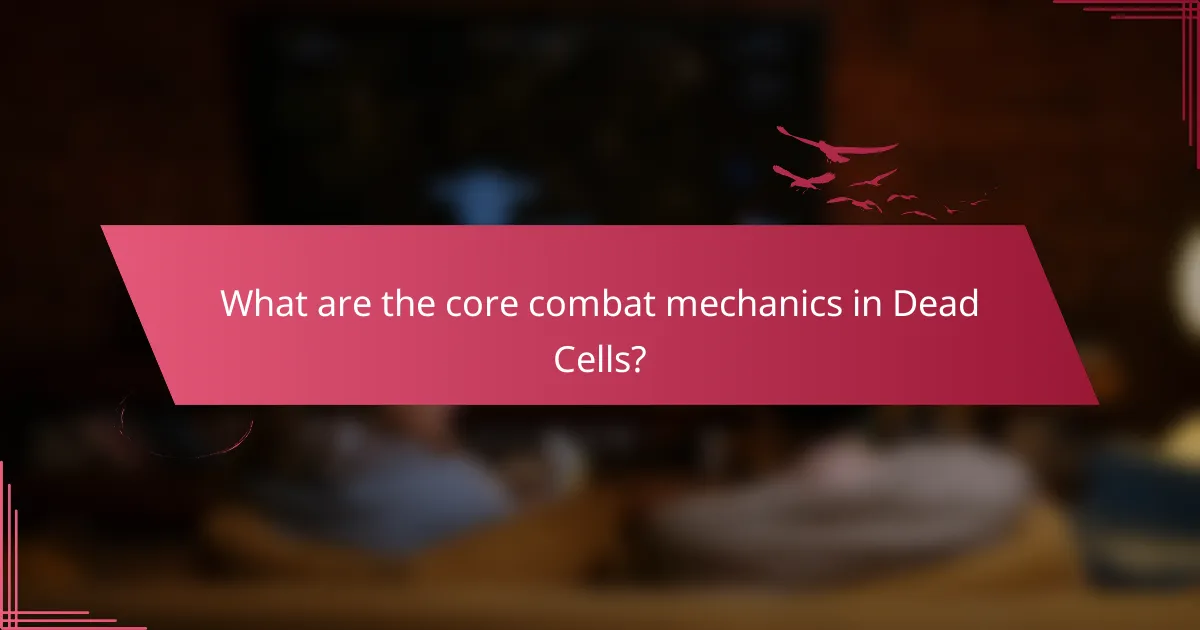
What are the core combat mechanics in Dead Cells?
The core combat mechanics in Dead Cells involve fast-paced, fluid action with a variety of weapons and abilities. Players can utilize melee attacks, ranged weapons, and skills to defeat enemies. The game emphasizes timing and precision, allowing for combos and dodging. Each weapon type has unique attributes, such as speed and damage output, enhancing gameplay diversity. Players can also discover and equip upgrades, fostering a progression system that rewards skillful play.
How do different weapon types impact gameplay?
Different weapon types in Dead Cells significantly influence gameplay by altering combat style and strategy. Each weapon category, such as swords, bows, or shields, offers unique attributes that affect damage output, attack speed, and range. For example, melee weapons generally provide higher damage but require close proximity to enemies, while ranged weapons allow for safer engagement from a distance. The choice of weapon can also impact the player’s progression, as specific builds may favour certain combat mechanics. Additionally, weapon upgrades and synergies with other items further enhance gameplay, creating diverse strategies tailored to individual playstyles.
What role do combos and skill chains play in combat?
Combos and skill chains are crucial for maximizing damage and enhancing combat effectiveness in Dead Cells. They allow players to string together attacks, increasing damage output and creating fluid gameplay. Effective use of combos can trigger special effects, such as status ailments or increased mobility, which are essential for navigating tougher enemies and bosses. Mastering these mechanics is key to progressing through the game, as they leverage the unique attributes of various weapons and skills to create powerful synergies.
How does enemy behavior influence player strategy?
Enemy behavior significantly shapes player strategy in Dead Cells. Players must adapt their tactics based on enemy patterns, strengths, and weaknesses. For example, aggressive enemies may require defensive maneuvers, while ranged foes prompt players to close the distance quickly. Understanding enemy types enhances strategic planning, as players can exploit specific vulnerabilities. This dynamic interaction encourages experimentation and mastery of combat mechanics, ultimately influencing progression within the game.
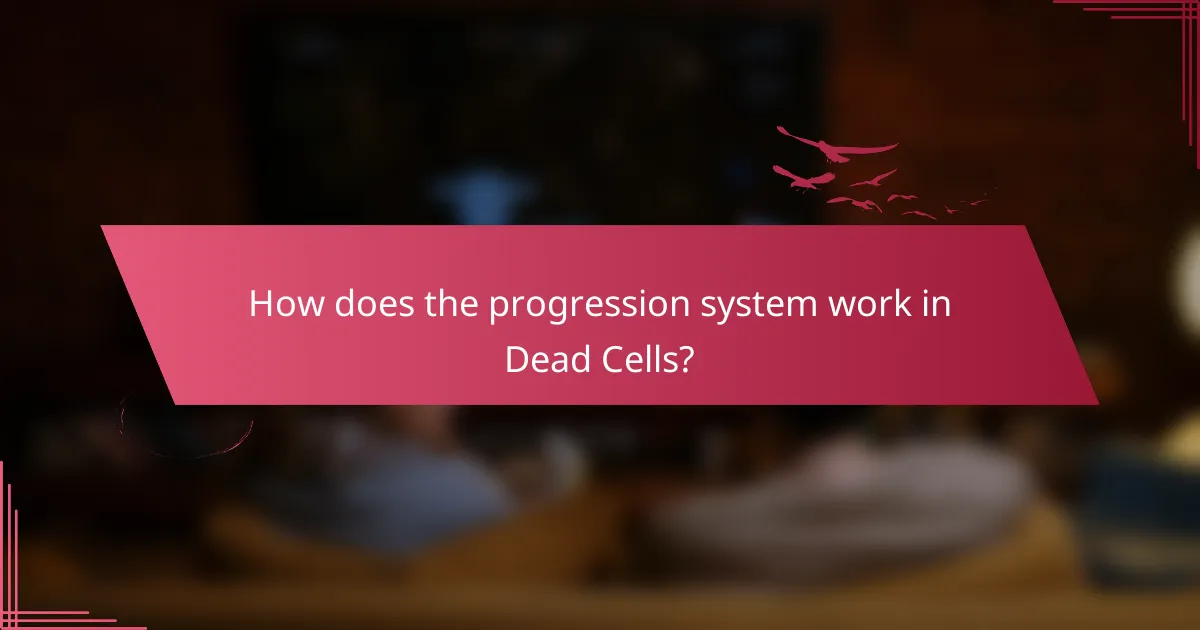
How does the progression system work in Dead Cells?
In Dead Cells, the progression system is based on exploring procedurally generated levels, collecting items, and upgrading abilities. Players gain experience through defeating enemies and discovering new areas, which unlocks various upgrades and weapons. The system encourages replayability, as each run offers different pathways and challenges. Key attributes include permanent upgrades, weapon variety, and the influence of player choices on progression. Players can also find blueprints to unlock new gear, enhancing their combat strategy.
What are the different ways to upgrade your character?
In Dead Cells, you can upgrade your character through various methods including collecting cells, unlocking new weapons, and acquiring skills. Each method enhances your combat capabilities and overall gameplay experience.
1. Collecting Cells: Gather cells from defeated enemies and use them to unlock permanent upgrades at the Collector.
2. Unlocking Weapons: Discover and unlock a diverse range of weapons and items that suit your playstyle, each with unique attributes.
3. Acquiring Skills: Use blueprints to unlock skills that provide new combat abilities, enhancing your tactical options.
4. Improving Gear: Upgrade your weapons and armour at specific locations to increase their effectiveness and damage output.
5. Choosing Runes: Acquire runes that grant new abilities, such as double jumping or climbing, which enhance mobility and exploration.
6. Experimenting with Builds: Combine different weapons and skills to create unique character builds, adapting to various combat scenarios.
How do mutations affect gameplay and character development?
Mutations significantly enhance gameplay and character development in Dead Cells by introducing unique abilities and altering playstyles. Players can adapt their strategies based on the mutations acquired, which can vary from improving combat skills to enhancing mobility. These changes create a dynamic experience that encourages experimentation and replayability. The unique attribute of mutations is their ability to provide diverse paths for character progression, allowing players to tailor their gameplay to personal preferences. As a result, mutations not only affect individual runs but also deepen the overall engagement with the game.
What is the significance of the rogue-lite elements in progression?
Rogue-lite elements in progression significantly enhance player engagement and replayability. They introduce a dynamic challenge, requiring players to adapt strategies with each run. The procedural generation of levels ensures unique experiences, while permadeath adds stakes. This combination fosters a sense of achievement as players refine skills and discover new tactics. The integration of these elements creates a compelling loop that keeps players invested in mastering the game.
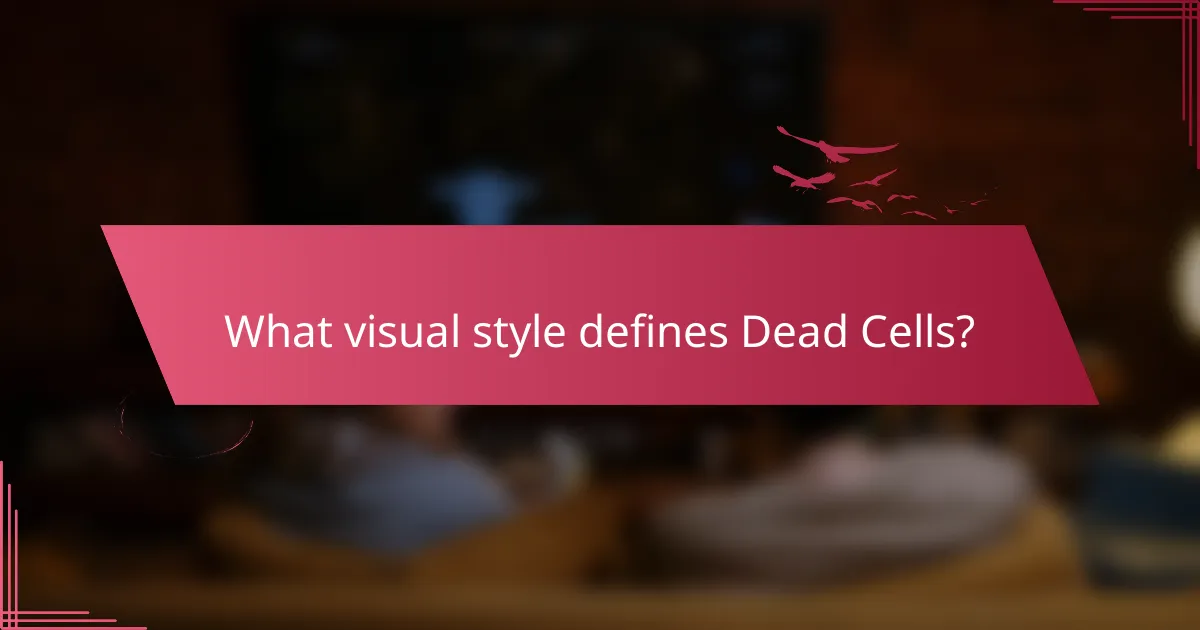
What visual style defines Dead Cells?
Dead Cells features a distinct visual style characterized by vibrant pixel art and fluid animations. The game combines a dark, atmospheric aesthetic with bright, contrasting colours to enhance its action-packed gameplay. Each environment is uniquely designed, showcasing various biomes that contribute to the game’s immersive experience. The art style effectively communicates the game’s themes, blending a retro feel with modern design elements.
How do the graphics contribute to the overall atmosphere?
The graphics in Dead Cells significantly enhance the overall atmosphere by creating a visually captivating environment. The pixel art style combines vibrant colours with fluid animations, immersing players in a dynamic world. Unique visual elements, such as varied biomes and detailed character designs, contribute to a sense of exploration and discovery. As a result, the graphics not only support gameplay mechanics but also evoke emotions, making each encounter memorable.
What role does animation play in gameplay experience?
Animation significantly enhances the gameplay experience in Dead Cells by providing fluid movement and visual feedback. It contributes to the game’s combat mechanics, making actions feel impactful and responsive. The animations help players anticipate enemy movements and attacks, improving their strategic decisions. Additionally, the visual style, characterized by vibrant animations, adds to the overall immersion, creating a more engaging atmosphere. This combination of dynamic animations and responsive gameplay mechanics elevates player satisfaction and enjoyment.
How does the art style reflect thematic elements of the game?
The art style of Dead Cells enhances its thematic elements by creating a vivid, immersive atmosphere. The pixel art design reflects the game’s rogue-like nature, emphasizing exploration and discovery. Each environment features distinct colour palettes and intricate details that convey the mood and challenges players face. The fluid animations of characters and enemies reinforce the fast-paced combat mechanics, highlighting the urgency and intensity of gameplay. This visual coherence supports the overarching themes of resilience and adaptation.
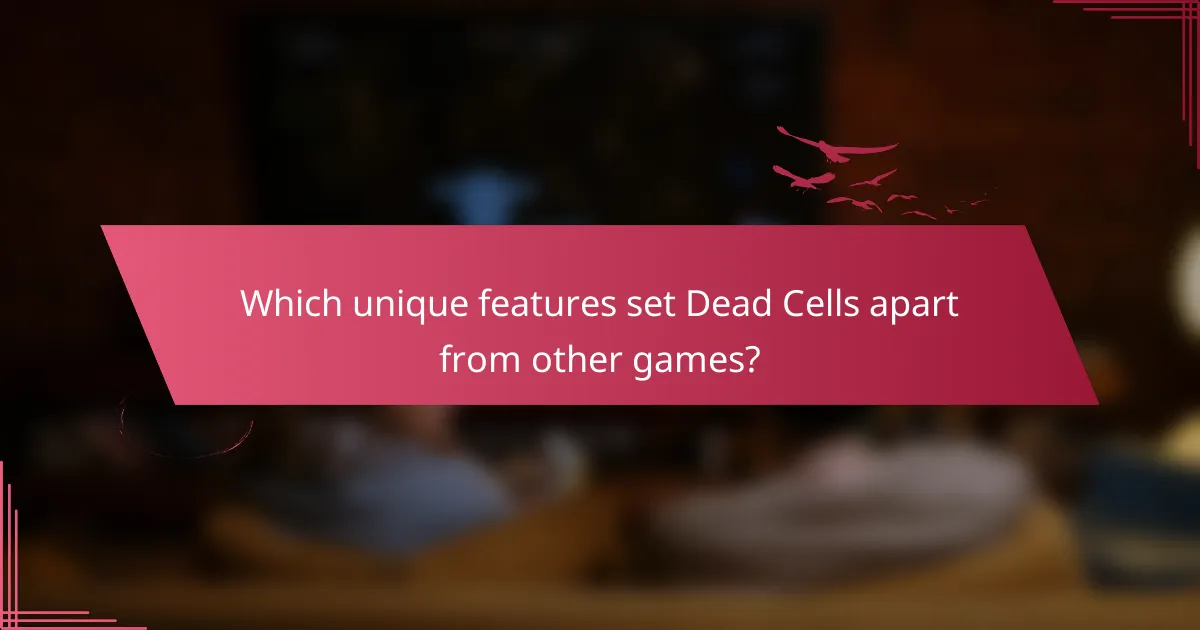
Which unique features set Dead Cells apart from other games?
Dead Cells stands out due to its fluid combat mechanics, innovative progression system, and distinctive visual style. The combat mechanics emphasize a blend of melee and ranged attacks, allowing players to adapt strategies dynamically. The progression system features rogue-lite elements, where players retain certain upgrades upon death, enhancing replayability. Visually, the game’s hand-drawn art style combines vibrant colours with detailed animations, creating an immersive experience. These unique features contribute to its popularity and critical acclaim in the gaming community.
What innovative mechanics are exclusive to Dead Cells?
Dead Cells features innovative mechanics like procedural generation, a fluid combat system, and a unique permadeath progression model. The procedural generation ensures each run is distinct, enhancing replayability. The fluid combat system allows seamless transitions between weapons, encouraging dynamic playstyles. The permadeath mechanic, while challenging, adds weight to decisions and exploration, creating a sense of urgency and investment in each run.
How does the game’s level design enhance replayability?
The level design in Dead Cells significantly enhances replayability by offering diverse environments and randomized layouts. Each run presents unique challenges, encouraging players to adapt their strategies. The interconnected pathways and hidden secrets create a sense of exploration, while the variety of enemies and biomes keeps gameplay fresh. Additionally, the procedurally generated elements ensure that no two experiences are the same, reinforcing the game’s appeal for repeated playthroughs.
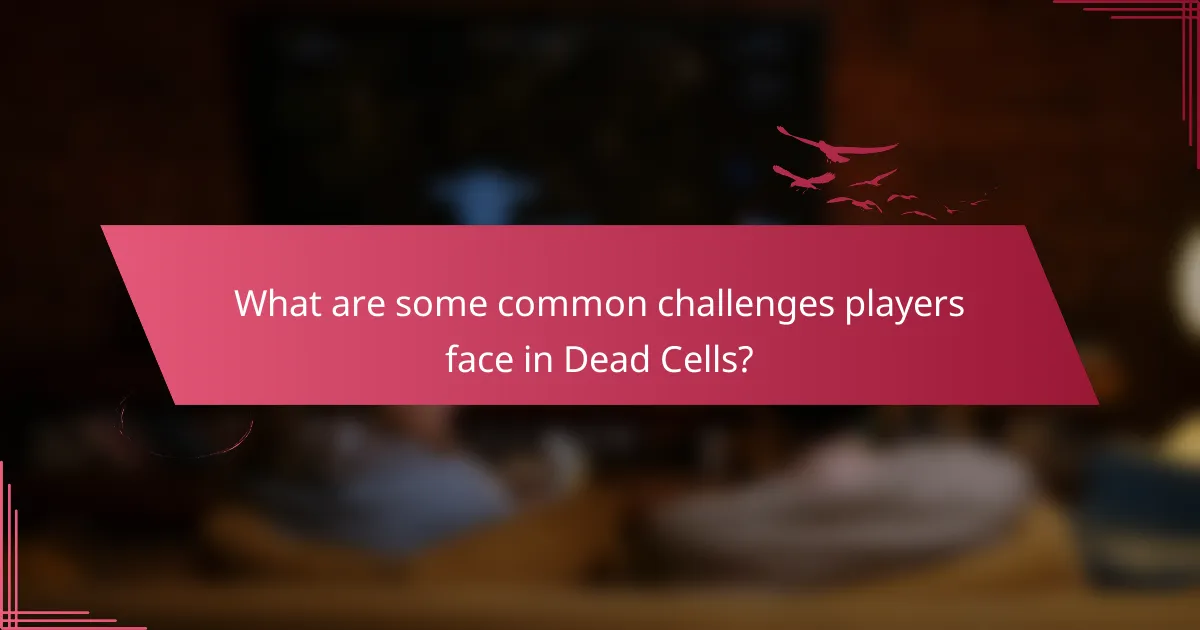
What are some common challenges players face in Dead Cells?
Players in Dead Cells commonly face challenges such as difficulty mastering combat mechanics, navigating intricate level designs, and managing resource scarcity. The game’s fast-paced nature demands quick reflexes and strategic decision-making. Players often struggle with the permadeath feature, which resets progress upon death, requiring them to adapt and learn from each run. Additionally, balancing weapon choices and upgrades can complicate progression, as each playthrough presents unique obstacles and enemies.
How can players overcome difficulty spikes in gameplay?
Players can overcome difficulty spikes in Dead Cells by mastering combat mechanics, utilizing the progression system, and adapting strategies. Focus on improving timing and precision during combat to defeat tougher enemies. Experiment with different weapons and upgrades to find effective combinations that suit your playstyle. Additionally, learning enemy patterns can help anticipate attacks and counter effectively. Finally, consider exploring earlier levels to gain more resources and experience before tackling harder challenges.
What strategies can help with mastering combat mechanics?
To master combat mechanics in Dead Cells, focus on timing, positioning, and weapon variety. Practice dodging enemy attacks to create openings for counterattacks. Experiment with different weapons to understand their unique attributes and find combinations that suit your playstyle. Utilize the environment to your advantage, using terrain to block enemy attacks and create strategic opportunities.
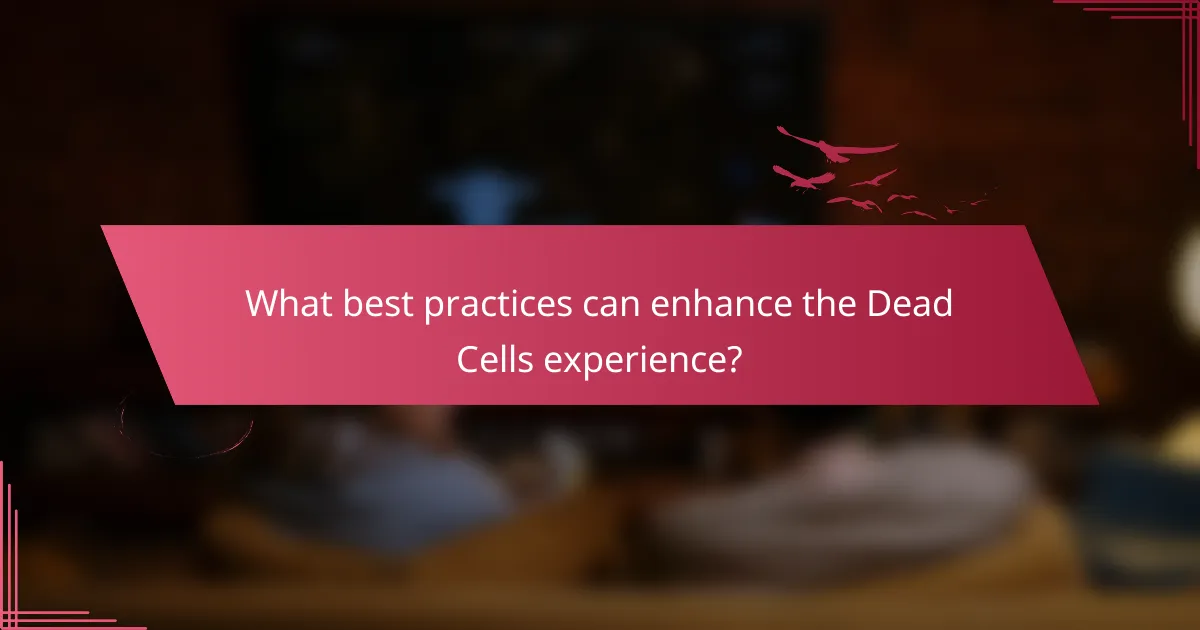
What best practices can enhance the Dead Cells experience?
To enhance the Dead Cells experience, players should focus on mastering combat mechanics, optimizing their progression system, and appreciating the visual style.
Engaging with the diverse weaponry allows players to find unique combinations that suit their playstyle. Experimenting with different builds can unlock powerful synergies, enhancing combat effectiveness.
Utilizing the progression system wisely, such as prioritizing upgrades that complement chosen weapons, can lead to smoother gameplay. Collecting cells and strategically investing them in permanent upgrades ensures longevity in gameplay.
Lastly, immersing oneself in the game’s visual style, including animations and environmental design, enriches the overall experience. The aesthetic choices contribute to the game’s atmosphere and can enhance player enjoyment.
Which upgrades should players prioritize for effective progression?
Players should prioritize upgrades that enhance survivability and damage output for effective progression. Focus on health upgrades, damage modifiers, and weapon enhancements.
1. Health upgrades increase survivability against enemies.
2. Damage modifiers boost overall damage output.
3. Weapon enhancements improve attack speed and effects.
4. Mobility upgrades allow for better evasion and positioning.
5. Skill upgrades enhance special abilities for combat versatility.
What tips can help new players adapt to the combat system?
New players can adapt to the combat system in Dead Cells by mastering movement, understanding weapon types, and utilizing the environment. Focus on dodging attacks and timing your strikes to avoid damage. Experiment with different weapons to find your preferred playstyle, as each offers unique attributes. Use the terrain to your advantage, such as climbing or dropping down to surprise enemies. Lastly, practice makes perfect; repetition will enhance your reflexes and familiarity with combat mechanics.
How can players effectively utilize the environment in battles?
Players can effectively utilize the environment in battles by leveraging terrain, obstacles, and traps. The game encourages players to use verticality to gain advantages over enemies. Players can also manipulate environmental hazards to damage foes, such as leading them into spikes or fire. Strategic use of dodge rolls can help evade attacks while positioning for counterattacks. Additionally, understanding enemy behaviours in relation to the environment enhances combat effectiveness.


